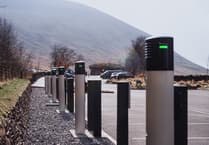Car owners are being advised not to resort to quick-fix online ‘hacks’ to remove the growing quantities of tree sap currently being deposited onto vehicles. The recent high temperatures across many parts of the UK have prompted a sharp increase in the sticky deposits, but car care firm Autoglym has advised that the use of unconventional chemicals and sharp objects can cause lasting damage to vehicle paintwork and trims.
‘Tree sap’ commonly refers to the resins secreted by conifers such as pine and fir, as well as honeydew, which is produced by aphids living in deciduous trees such as acers, birch, magnolia, oak, elm, walnut, beech and wisteria. These residues quickly harden due to their high sugar content, and the longer they are left on paintwork the more difficult they can be to remove.

Autoglym’s top 10 tips for avoiding and tackling tree sap
- When sap deposits are most common, check your car more frequently and wash the residues away soon after you find them. The longer they are left, the harder they will be to remove.
- Where possible, avoid parking under trees – particularly those with a higher sugar content.
- Take note of wind direction when parking near trees in early summer – sap deposits are carried on the wind, so you don’t need to be directly under branches to succumb to the sticky fallout.
- Watch out for rain showers, too. You might think that rain helps wash sap away, but it can exacerbate the problem.
- To safely remove sap, Autoglym recommends owners soften the residue first, ideally with a good rinse of warm water before applying a suitable car care solution.
- Don’t attempt to forcibly rub at sap residues during the wash process. Instead, repeat the wash process, apply plenty of soapy water, agitate gently, and don’t allow the suds to dry out.
- Consider using a snow foam on the car, as this is a great way to ensure the cleaning solution dwells on the car for longer, softening the sap deposits.
- If, after a thorough wash, there are still sap deposits left on the car, consider using a dedicated automotive clay bar (e.g. the Autoglym Clay Detailing Complete Kit), which will gently lift sap and any other stubborn contaminants adhering to the surface of the paintwork.
- Alternatively, harder, baked-on sap can be removed by using a dedicated solvent-based car care product that is designed to soften and lift tar deposits.
- Prevention is better than cure, so after washing the car be sure to apply some form of protection to the surface.


.jpeg?width=209&height=140&crop=209:145,smart&quality=75)


Comments
This article has no comments yet. Be the first to leave a comment.